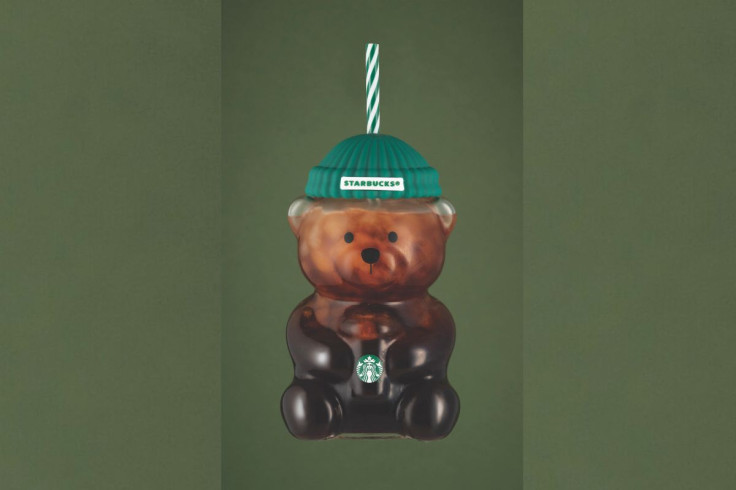Starbucks Bear Cup Price Now Up for $300 on eBay After Selling Out in 24 Hours — A Shocking 900% Markup!
Starbucks's Bearista Cold Cup sold out in 24 hours, sparking chaos among collectors

When Starbucks launched its 2025 festive collection, the Bearista Cold Cup quickly became the centre of attention. The bear-shaped glass tumbler, priced at about £23 (US$29.95), sold out across the United States within hours of its 6 November release.
By the following morning, resellers were listing the limited-edition cup for up to £235 (US$300) on eBay, nearly a 900 per cent increase on its original price. The surge sparked frustration among customers who missed out, as well as a broader debate about scarcity marketing and the growing resale culture around branded merchandise.
The frenzy has reignited questions about how companies use limited-run products to generate hype and collector demand far beyond their practical value, a tactic increasingly common in fashion, streetwear and consumer goods.
The Launch and the Public Reaction
The Bearista Cold Cup was released alongside Starbucks's 2025 festive drinks menu. The 20-ounce clear tumbler, shaped like a teddy bear wearing a green beanie-style lid and a striped straw, was promoted as a collector's piece for the holiday season.
Customers reported queuing outside stores before opening, with some baristas saying their branches had received only one or two cups. Many outlets sold out within minutes. Starbucks later acknowledged that demand had 'exceeded expectations' and apologised to disappointed customers.
Within hours, resale listings began appearing online. On eBay, the cups were being offered at prices ranging from £120 to £235 (US$150–$300), transforming what began as a £23 novelty item into one of the season's most sought-after collectables.
Why Prices Soared
Analysts attribute the rapid price rise to scarcity, online visibility and resale speculation. With limited stock available in each location, the cup's rarity became part of its appeal.
Social media further amplified demand. Videos and photos of the Bearista Cup went viral on TikTok and Instagram, fuelling what marketing observers described as a self-perpetuating cycle of interest and urgency.
Resellers also moved swiftly. Some posted listings before many customers had reached stores, mirroring patterns seen in the trainer and streetwear markets where scarcity and hype drive both status and profit.
While Starbucks benefitsfrom the publicity generated by such frenzies, analysts note that this strategy can alienate loyal customers who feel excluded by limited availability.
Wanted to buy this Bear glass for #DaBears podcast. Wife went to go snag it. They were sold out at 8 Starbucks she went to ($29.95 retail)
— Mason West (@WestSportsPT) November 6, 2025
Now they are going for $300 on ebay by resellers
A) y'all suck
B) hey @Starbucks maybe actually give enough inventory to your stores? pic.twitter.com/i5guJiMBUq
These Starbucks bear 🐻 cups really got
— Inez Taylor Lopez (@Mysthickque) November 7, 2025
people out here fighting & re-selling a $30 cup for $200!!!! Foh! 😭 @Starbucks pic.twitter.com/zY4Qt2DlvS
Yes i want the bear Starbucks cups so that i can resell both for $300’😭
— W.Mason 🖤 (@kvng_shakey) November 7, 2025
Starbucks employees CAUGHT purchasing the Bearista Cup before store opens… 🚨
— Nick Hustles (@nickhustlez) November 6, 2025
These are reselling for $300+ on eBay
Would you have done the same thing? 🤔 pic.twitter.com/qPBk6j1chl
🐻 $BEARISTA is starting to make noise on the charts with early momentum brewing fast. At a $187K market cap, this one’s still in its early phase — but attention from traders is growing.
— NYLA (@Nyla_001) November 7, 2025
The community’s energy is picking up, and with fresh mentions rolling in, this bear might… pic.twitter.com/71Fe2YLnEV
What It Means for Starbucks and Shoppers
For Starbucks, the Bearista phenomenon underscores both the power and risks of scarcity-based marketing. The company has gained widespread exposure, but also criticism from fans who struggled to find the product. Some social-media users alleged that staff bought the cups before they went on sale, though Starbucks has not commented on those claims.
For buyers willing to pay hundreds of pounds on resale platforms, the investment may prove short-lived. Prices often fall once initial excitement fades or new merchandise lines appear. Experts say the craze highlights how branded goods are increasingly viewed as collectables rather than everyday items.
The Bearista Cup's meteoric rise from a £23 festive tumbler to a £235 collector's piece in less than 24 hours illustrates the modern blend of social-media hype, limited supply and consumer speculation. For Starbucks, it has been a marketing success, but for many customers, a reminder of how quickly demand can turn a simple cup into a costly symbol of the season's retail fever.
© Copyright IBTimes 2025. All rights reserved.





















